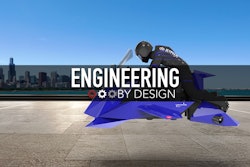At the end of the day, everyone just wants to make more money. That was the message at the Factory of the Future experience at the Bosch Rexroth Automation & Electrification facility in Hoffman Estates, IL.
According to Peter Fischbach, industry segment manager at Bosch Rexroth, 70 percent of machines on the factory floor are not connected at all. The situation provides a huge opportunity to make machines more transparent (and profitable) using data, but one of the common misconceptions is that if you want the Industrial Internet of Things (IIoT) or Industry 4.0, you have to buy new equipment.
To demonstrate how manufacturers can connect legacy machines, the company took a SKIL drill press and added some sensors as well as the company’s IoT Gateway. The upgrade enabled them to start pulling data from an otherwise dumb or “brownfield” machine and use it in real time.
“Brownfield” equipment is a term used for legacy equipment that is otherwise unconnected and “greenfield” refers to a new facility that is starting from scratch.
The team added an acceleration sensor to monitor motor and spindle speed as well as the ability to monitor pressing force and drill temperature with an edge-connected device. All-in, they added about $2,000 worth of technology to the press.
The data is routed through Bosch’s IoT Gateway which has the ability to pull data from multiple disparate devices and then deploy it to a database where it can be used for anything, including predictive maintenance, data analytics, etc.
For the demo, the data was pulled into IoT Insights, analysis software that comes pre-installed on the IoT Gateway. It provides a dashboard for the user to view all live-streaming data in one place for up to 20 machines. The user can set the dashboard to monitor spikes in quality problems.
The SKIL example shows a plug-and-play option for OEMs that want to get rolling with an IIoT solution. According to Fischbach, any company can start small and build up to the "factory of the future" using existing brownfield machines.
According to Matteo Dariol, once companies have the data, a common problem is end user follow up. Dariol says that to understand what's going on, companies need to have the right people looking at the right data.
IoT is confusing and a lot of people don't know where to start. Bosch thinks that they can not only help scale towards IoT functionality, but they have the legacy application expertise as well.
Fischbach says that a lot of factories have no insight at all, and for a few thousand dollars of technology, they can change that. After all, at the end of the day, everyone just wants to make more money.
Oh, and the company made a rap marketing video, so there’s that too. #LikeABosch






















